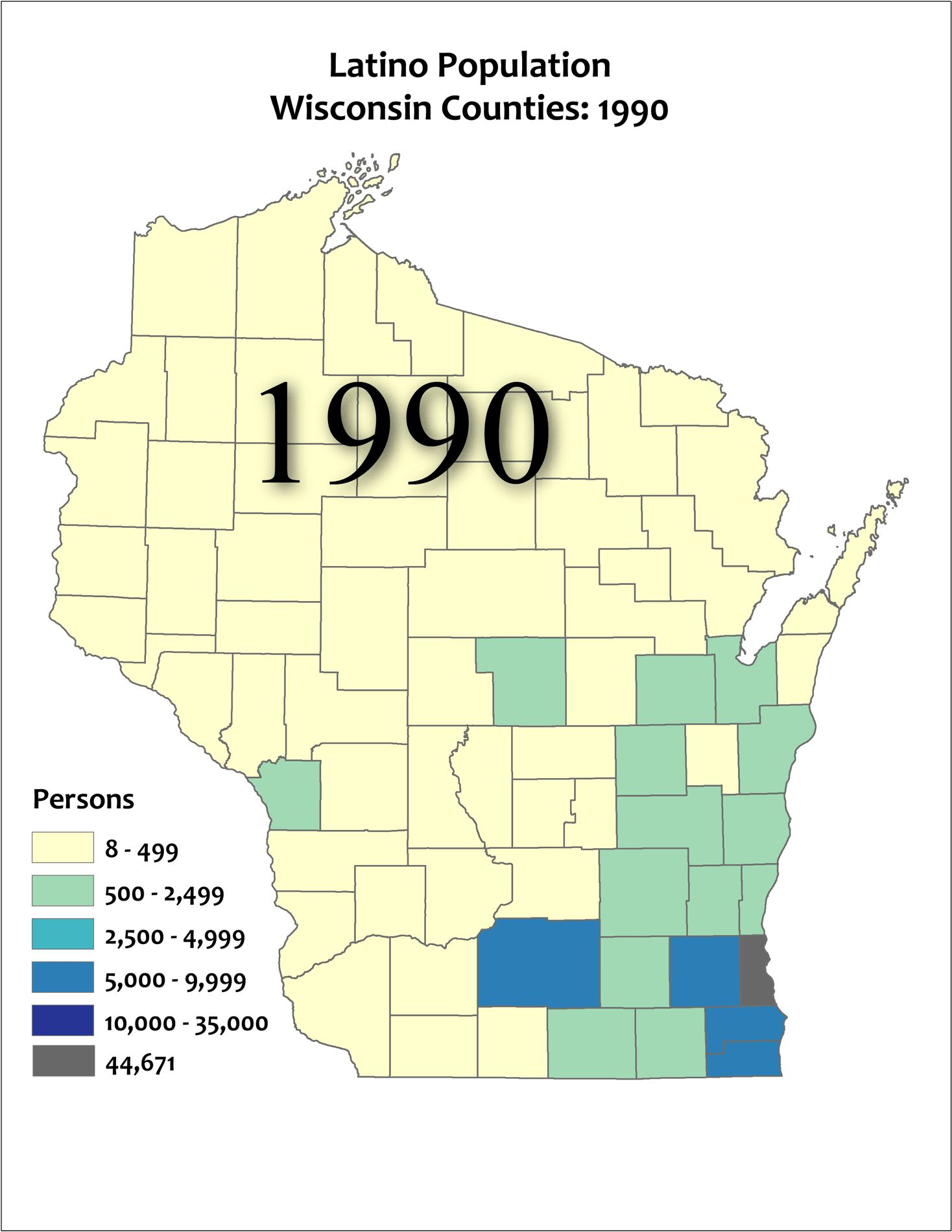
Wisconsin Latino Family and Youth Study: Demographic Background
To provide a broader view of the Latino population in the study counties—as well as in two additional counties, Brown and Trempealeau—we summarize demographic data on a number of characteristics. In addition, most measures include corresponding data for the non-Latino or total population to provide comparative perspective. The data are drawn from the Census Bureau’s decennial censuses, annual estimates and American Community Survey—which aggregates survey responses across multiple years to produce estimates of the population’s characteristics—and the Wisconsin Department of Public Instruction.*
The counties are organized by their status of being primarily urban (Brown, Kenosha, Milwaukee, Racine, Dane) and primarily rural (Fond du Lac, Door, Kewaunee, Trempealeau). Milwaukee, the state’s largest county, also has the largest Latino population (more than one-third of the state’s Latino residents); Brown, Kenosha, Racine and Dane have similar-sized Latino communities; the rural counties have relatively smaller populations.
*Tables with a specific year in their titles (e.g., 2010, 2014) are drawn from either the decennial census (years ending in 0) or the Census Bureau’s annual population estimates program. Tables with “dashed” years (e.g. 2010-2014) in their titles draw on the data of the Census Bureau’s American Community Survey.
Total Latino Population and its Growth over Time
Housing and Household Patterns
Immigration and Countries of Origin
Language Ability
Labor Force
Education
Income and Poverty



